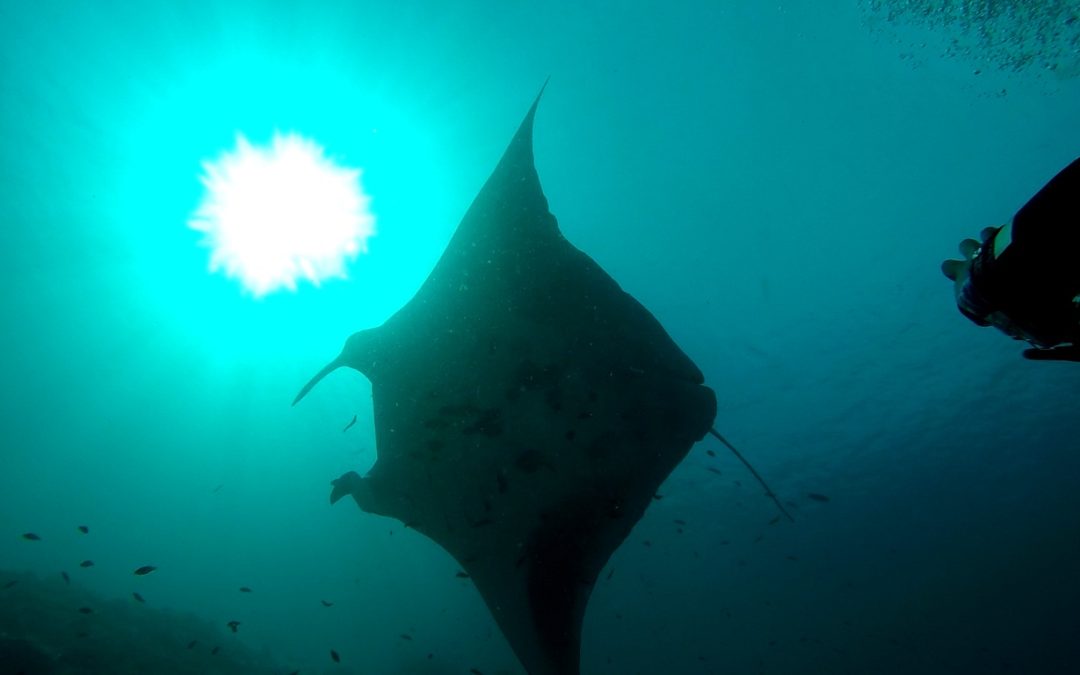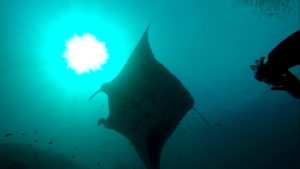It’s our second manta expedition during MIP-2016, and this time we have a special guest onboard. Abraham Sianipar from Conservation International has joined us to share information about CI’s manta research work. Yesterday we learned about DNA sampling and satellite tagging in the classroom, and today we are going to practice some basic field survey techniques.
Satellite tagging is monitoring method that uses satellites to get track manta ray movements and distribution. This information can help us to understand the status of manta populations and inform regulations. DNA sampling is another way to monitor manta rays, and help us understand the evolutionary history of mantas but also estimate the size of a population.
Abam told us that these survey techniques are a difficult task and needs two people in a survey team. One person to take a photo ID of the ventral markings, and one to take the DNA sample or deploy the satellite tag.
I really enjoyed learning from others who have the same mission in manta ray conservation. The more we can learn about manta populations from satellite tagging, DNA sampling or other techniques, the more information we can provider to law makers to design rules that conserve manta rays. I think this technique is suitable for many other endangered marine animals, and it is important to give training and share information like this to other conservation organisations and even to students.



